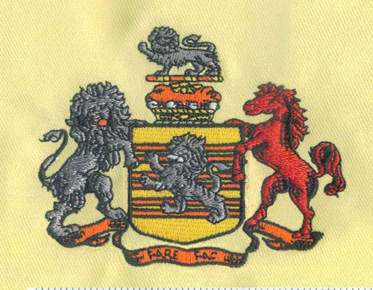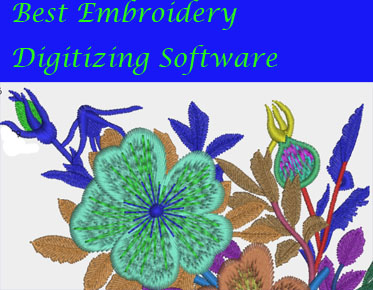Advanced Embroidery Digitization: Exploring Complex Stitches and Designs
Embroiderydigitization is a crucial process of converting a design into a digital embroidery file that can be read and executed by an embroidery machine. While simple embroidery designs may only require a few basic stitches, creating more complex designs often requires advanced digitization techniques that utilize a variety of stitching methods and design considerations. In this article, we will delve into the world of advanced embroidery digitization, exploring the various techniques and approaches necessary for creating intricate embroidery designs with complex stitches and patterns.
Stitch Types
There are many different types of stitches that can be used in embroidery digitization. The most common stitches are satin stitches, fill stitches, and running stitches. However, more complex designs may require specialty stitches, such as chain stitches, couching stitches, and buttonhole stitches.
Satin Stitches
Satin stitches are used for creating smooth, shiny areas in a design. They are created by stitching back and forth across a section of the design. Satin stitches can be used to create outlines or to fill in areas of a design. When digitizing satin stitches, it's important to ensure that the stitches are closely spaced and that the tension is correct to avoid puckering.
Fill Stitches
Fill stitches are used to fill in large areas of a design. They can be created using a variety of stitch types, including zigzag stitches, brick stitches, and lattice stitches. When digitizing fill stitches, it's important to consider the density of the stitches and the direction of the stitches to ensure that the design is even and smooth.
Running Stitches
Running stitches are used for creating outlines and details in a design. They are created by stitching back and forth in a straight line. Running stitches can be used to create lettering, fine details, and decorative elements. When digitizing running stitches, it's important to ensure that the stitches are closely spaced and that the tension is correct to avoid loose or uneven stitches.
Specialty Stitches
Specialty stitches, such as chain stitches, couching stitches, and buttonhole stitches, can be used to create texture and dimension in a design. These stitches require specialized digitization techniques, such as creating custom stitch angles and adjusting the stitch density.
Design Considerations
When digitizing complex embroidery designs, it's important to consider the size and complexity of the design. Larger designs may require more intricate stitch patterns and a greater level of detail, while smaller designs may require simpler stitch patterns and fewer details.
It's also important to consider the type of fabric the design will be embroidered onto. Different fabrics may require different stitch types and densities to ensure that the design is visible and doesn't damage the fabric.
Advanced embroidery digitization requires a high level of skill and experience. By using a combination of stitch types and specialty stitches, along with careful consideration of design elements and fabric type, it's possible to create intricate and detailed embroidery designs that are both visually stunning and durable.
In addition to understanding stitch types and design considerations, there are several digitizing techniques that can be used to create complex embroidery designs.
Underlay Stitches
Underlay stitches are a type of stabilizing stitch that is used to provide a foundation for other stitches. They are often used to prevent distortion and ensure that the design is evenly stitched. Underlay stitches can be created using running stitches or fill stitches, depending on the complexity of the design and the type of fabric being used.
Layering Stitches
Layering stitches are used to create depth and dimension in a design. They involve layering stitches on top of one another to create a textured effect. Layering stitches can be used to create realistic-looking fur, feathers, or other natural elements.
Stitch Angles
Stitch angles are an important consideration when digitizing complex embroidery designs. By adjusting the angle of the stitches, it's possible to create shading and depth in the design. For example, by using stitches at a slight angle, it's possible to create the illusion of curved lines or shading in a design.
Manual Digitizing
Manual digitizing involves creating embroidery designs by hand, using specialized software to draw each stitch individually. This technique requires a high level of skill and experience but allows for greater control over the design and stitch placement.
Automatic Digitizing
Automatic digitizing involves using software to automatically convert an image or graphic into an embroidery design. While this technique can be faster than manual digitizing, it may not always produce the desired result and may require manual adjustments to achieve the desired effect.
Advanced embroidery digitization involves a
range of techniques and considerations to create complex and detailed
embroidery designs. By understanding stitch types, design considerations, and
digitizing techniques, it's possible to create visually stunning embroidery
designs that are both durable and long-lasting. Whether you're creating designs
for personal use or for commercial purposes, taking the time to master these
techniques can help you create embroidery designs that are truly works of art.



